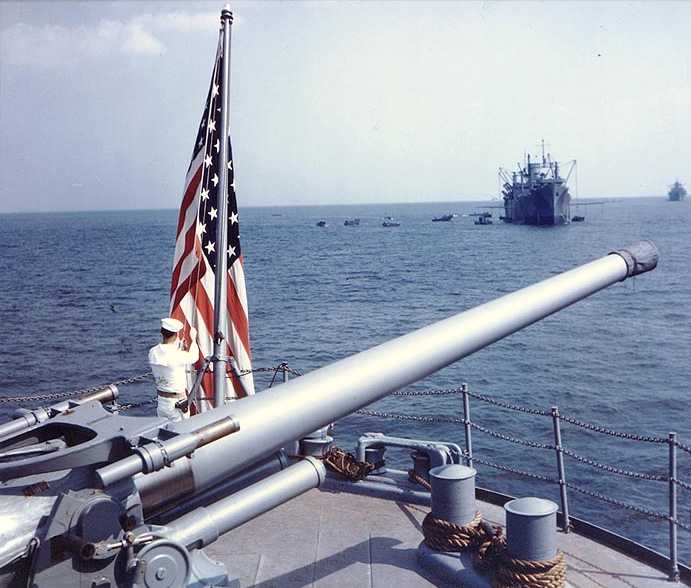|
These guns were also used as coastal artillery, most notably at Wake Island, where they are credited with sinking the Japanese destroyer IJN Hayate. The US Navy was proud of the performance of this gun, as it had both a high muzzle velocity and good accuracy, important features for an anti-destroyer weapon on capital ships. As a result of its high muzzle velocity, the danger space for this gun was quite large, actually longer than the range to the target for distances less than 3,000 yards (2,740 m). This high performance did result in a short barrel life. In the late 1930s these 5"/51 (12.7 cm) SP guns and their cousins, the 5"/25 (12.7 cm) AA guns, were both replaced on new construction by the versatile 5"/38 (12.7 cm) Mark 12. The British obtained three guns from Bethlehem Steel during World War I and employed them in the coastal defenses at Scapa Flow. In 1918 a further 150 guns of an improved pattern were ordered to arm DAMS, but this order was cancelled at the end of the war. These guns were designated as 5"/51 (12.7 cm) BL Mark VI and VII, respectively. During World War II, 22 Mark 8 Mod 7 guns were supplied with the ten US Coast Guard Cutters transferred to Britain as a part of Lend-Lease. Most of these guns were later replaced with British 4"/45 (10.2 cm) QF Mark V and other British AA weapons. Some of the 5"/51 (12.7 cm) guns were then sent to New Zealand where they were used in coastal defenses. The construction of the Mark 7 was similar to the previous 5"/50 (12.7 cm) Mark 6 and consisted of A tube, jacket, hoop, locking ring and screw box liner. Some early Mark 7 guns were completed as case (semi-fixed) ammunition guns but were later converted to bag guns. Used a side-swing Smith-Asbury, Welin breech block. The Mark 8 gun used steel for some components and the chamber was slightly different, being constructed of tapered liner, A tube and full length jacket with a hoop and locking ring. Used a breech bush and a liner locking bush with an Asbury Welin breech mechanism. The Mark 9 was intended for submarines and was similar to the Mark 8, but had a different screw box liner, breech and chamber to allow the use of semi-fixed ammunition. Mark 14 was a relined Mark 8 and Mark 15 was the Mark 14 with an enlarged chamber and a chromium plated bore. The data that follows is specifically for the Mark 15 version unless otherwise noted. |

5"/51 (12.7 cm) on unidentified Navy Transport
about 1942
|
| .
|